Happy Poetry Friday! Please visit Karen Edmisten for some fall reflections and to hear from all of the Poetry Friday poets.

Today’s post mixes math and poetry. First, I made a little origami star out of a book page (Dan Brown’s The Da Vinci Code, if you were wondering what book).
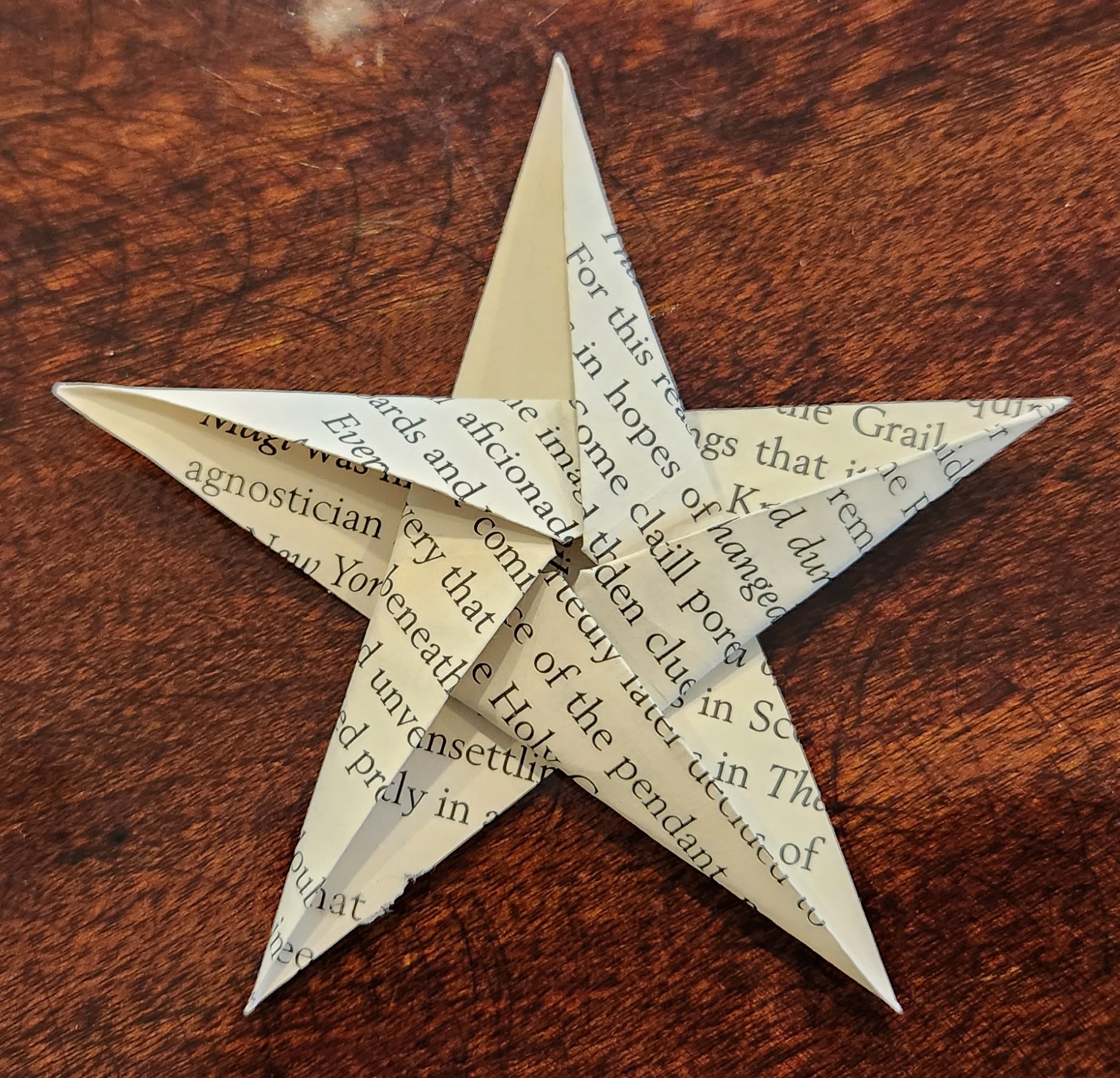
THEN, I wanted to make a BIG origami star. I started by gluing a bunch of book pages together.
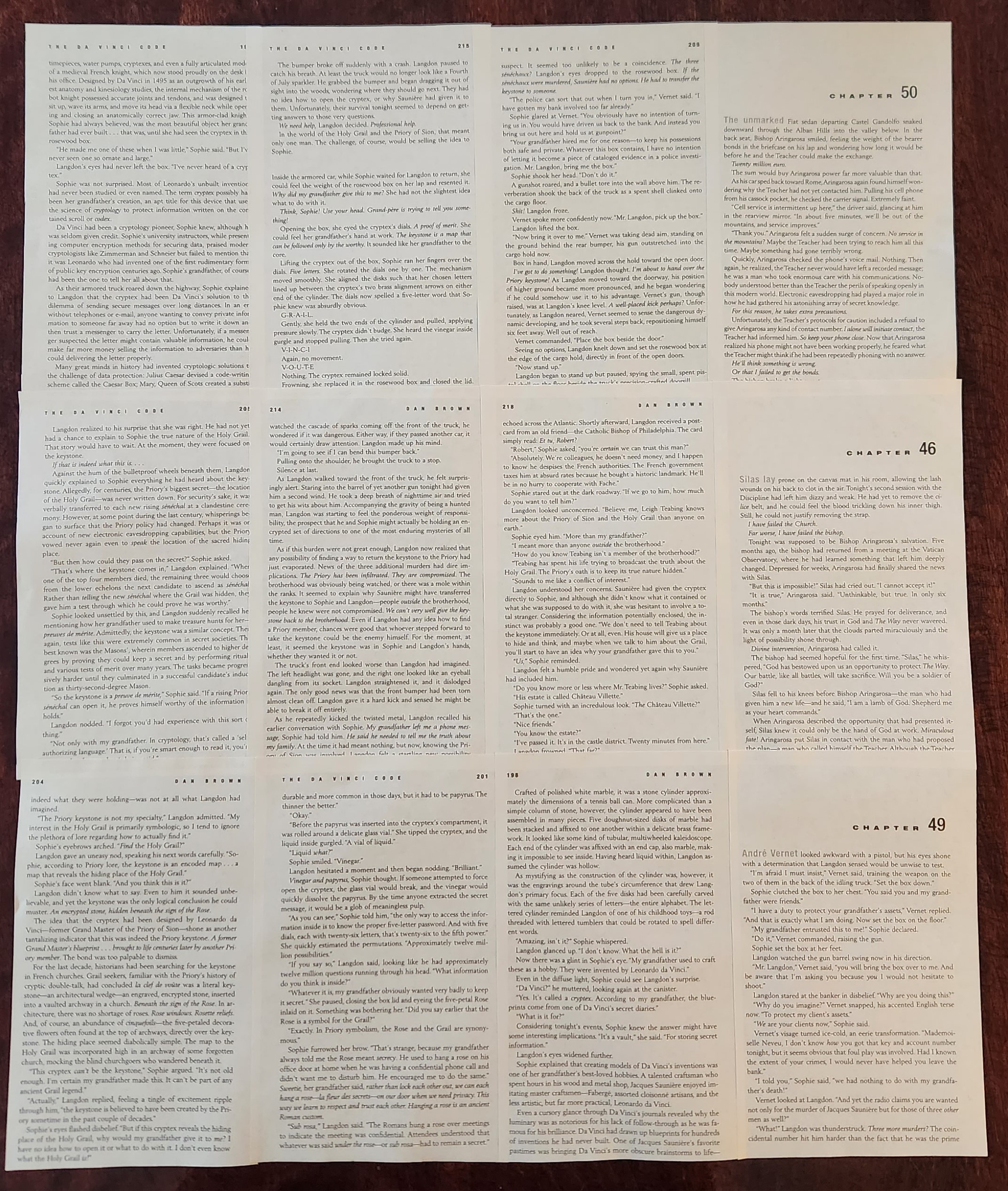
Because the instructions for making this star start with a regular pentagon (regular meaning all sides are the same length), I had to do a quick high school geometry refresher to figure out how to draw a perfect pentagon. I needed to know what size the interior angles of a pentagon should be:
The sum of interior angles of a polygon = (n-2) x 180,
where n is the number of sides in the polygon (which, for a pentagon = 5), so
(5-2) x 180 = 3 x 180 = 540 degrees = the sum of all of the interior angles
For a regular pentagon (where all sides are of equal length),
each interior angle = (the total number of degrees) divided by (the number of angles (or sides)).
So, for a pentagon:
540 / 5 = 108 degrees = the size of each interior angle.
OK! Now, to find a protractor, which I have not used in … a while. Surprisingly, I had three.
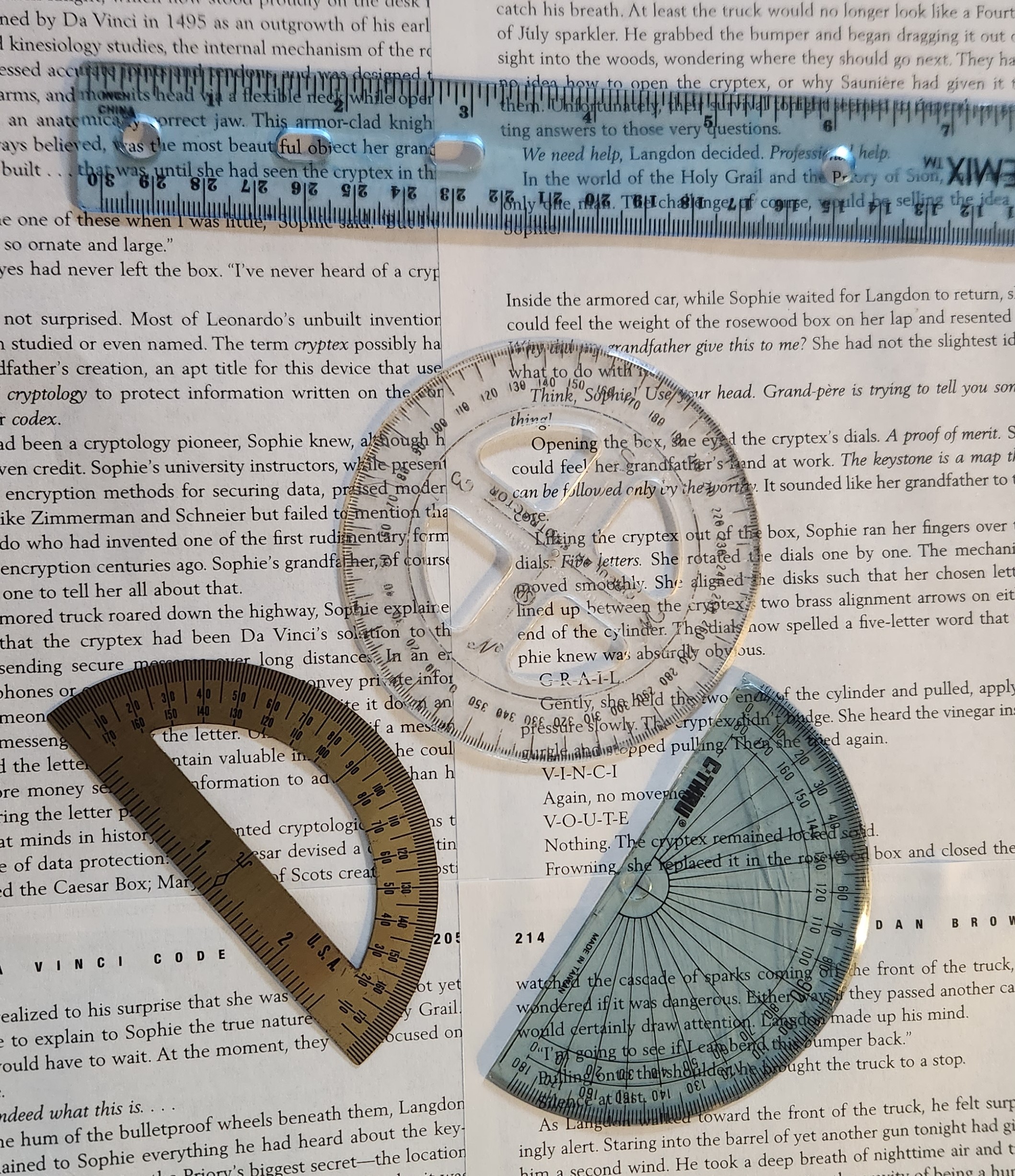
BOOM! Pentagon (1 foot per side).
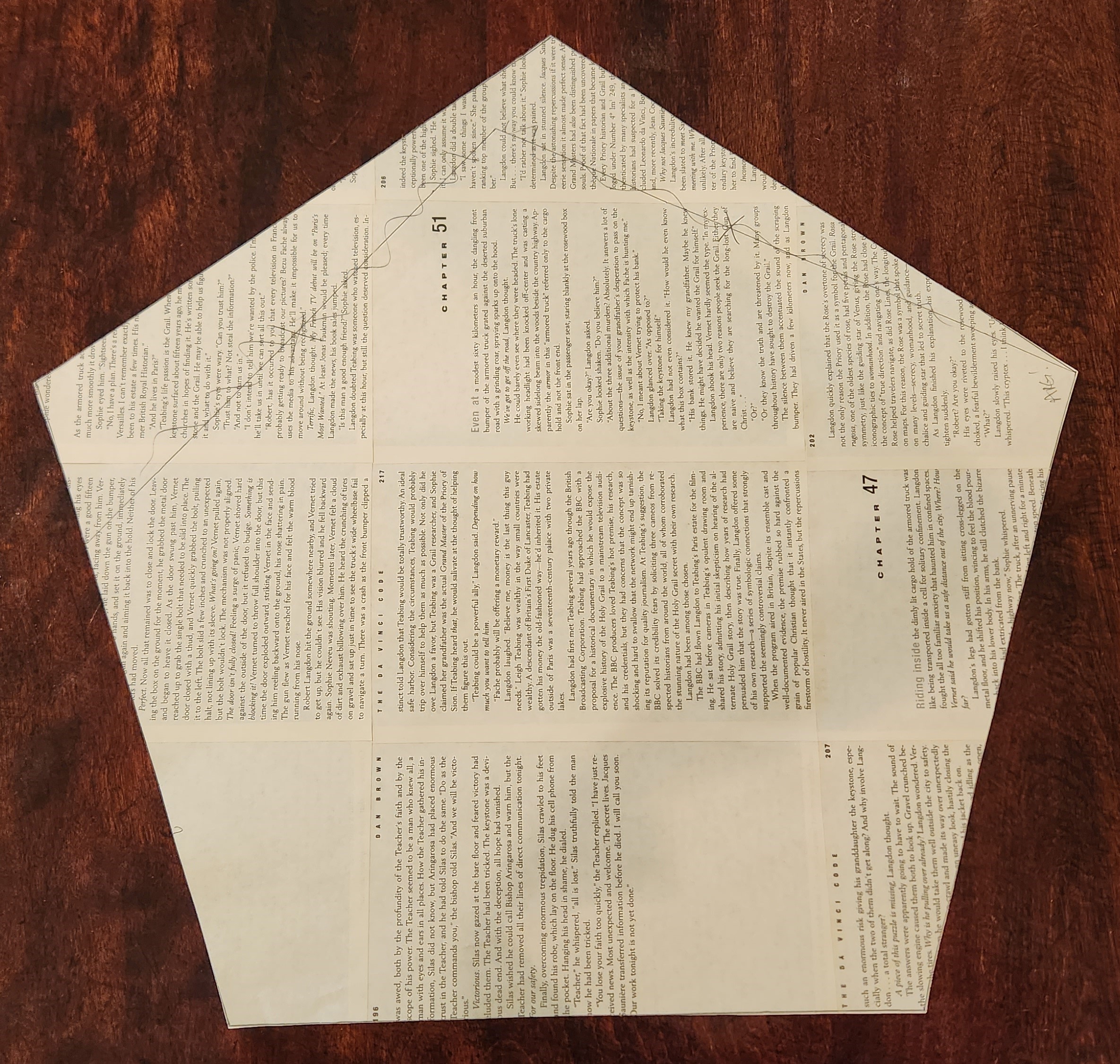
(Please ignore the pencil marks from my initial incorrect angle measurement.)
About 25 folds later, VOILA! Big star.
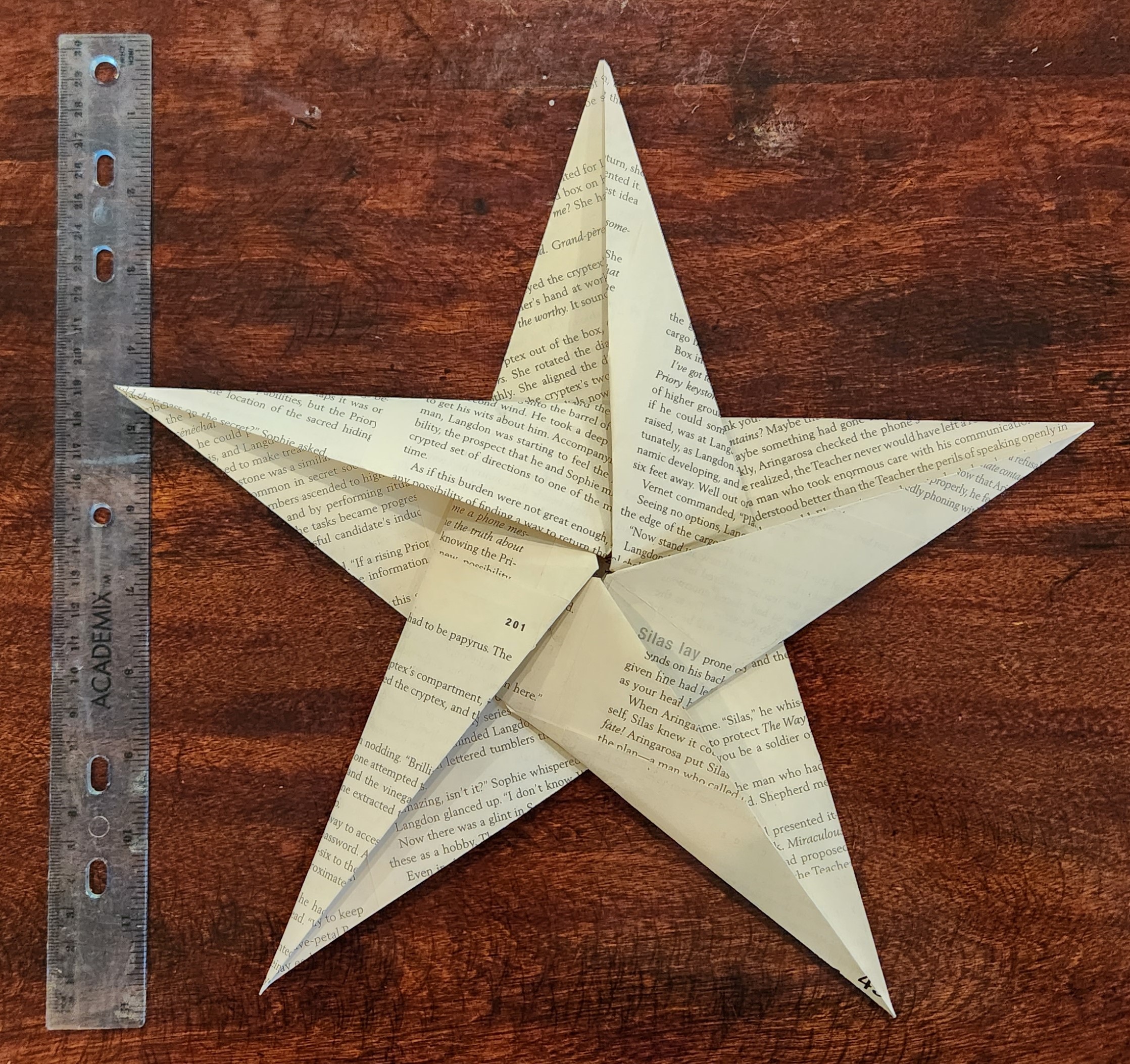
Now for the poetry! Turns out, there are a lot of poems that reference origami or use it as a metaphor for life. Interestingly, of the poems I found, very few were metrical, in spite of origami’s precise, repetitive, dare I say rhyming folds (no, I probably shouldn’t have dared). But, I get it -- somehow, origami feels like it belongs with free verse.
Thus, here is a poem by B. Sue Johnson. For more background on this poem, see here.
Folding Paper
origami life
fold, then fold again
your hands persuading paper
to accept the creases and expand
into a bird
or a flower
while each passing day
adds a wrinkle to your skin
This poem by Joyce Sutphen begins:
Origami
It starts
with a blank sheet,
an undanced floor,
air where no sound
erases the silence.
As soon as
you play the first note,
write down a word,
step onto the empty stage,
… for the full poem click here.
Lastly, here is one that I wrote:
Origami Swan
your
t
i
n
y
origami criticisms
will never fold me
into a swan
© 2023, Tracey Kiff-Judson
So ... "origami criticisms" made perfect sense to me when I wrote it (criticisms that are like origami, i.e. repetitive little creases/folds/digs), but upon rereading, it sounds like criticisms of origami, which is not what I meant. Ah well, an imperfect poem --
and to go with the imperfect poem, my imperfect origami swan that went horribly wrong somewhere around fold 24. : )
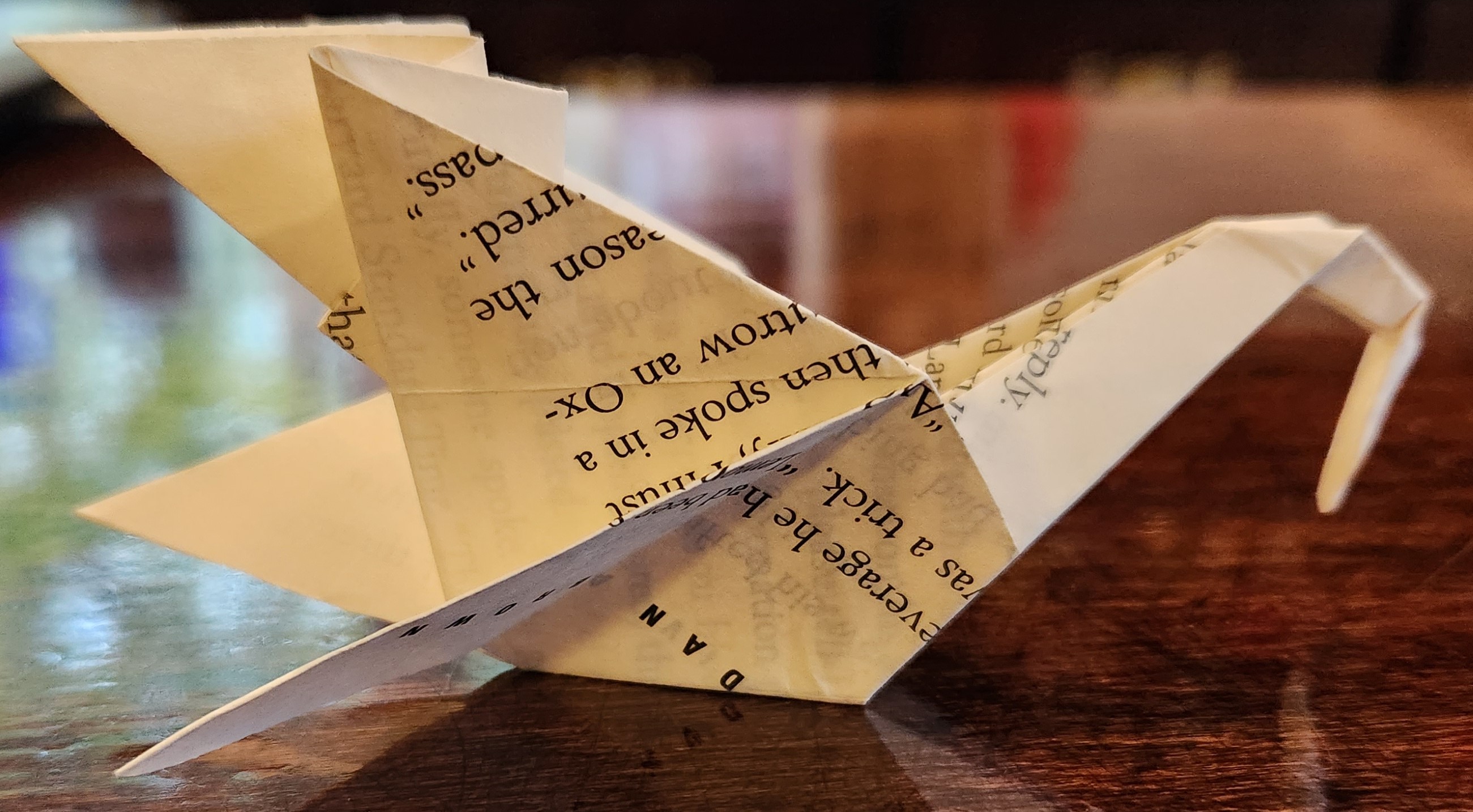
If you’d like to give the origami star a try, click here for instructions. For the swan, click here (just don't look at my swan for reference!). Most likely, you will make one much better than mine!

Thank you, Linda! How fun to do origami with students! That tells me that you are a very patient person. I am not even patient enough to do one swan correctly by myself! : )
Thank you, Robyn! It was a fun little project!
And -YAY! - btw, for your concrete poem/swan!! (and your "imperfect" origami one... which gives me great relief, knowing all forms allow for imperfection. :)
Haha, truth be told, I have yet to write a poem that I'd call perfect! : )